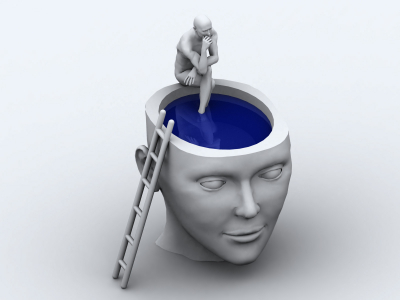How “The Interpreter” Screws Up Market Research

Most market researchers earn their living by asking questions – what people did, why they did it, what they might do in the future, and so on. The methodology varies – focus groups, Web surveys, interviews, etc. – but in most cases the fundamentals are similar. What would happen if these methods were applied to a person who had a diabolical module in his brain called “The Interpreter” that was constantly making up explanations for that person’s actions? These explanations would usually be logical and plausible, but in almost every case completely false. Unfortunately for market researchers, that person is all of us.
The rationalizing power of our minds was first dubbed “the interpreter” by prominent neuroscientist Michael Gazzaniga:
The same split-brain research that exposed shocking differences between the two hemispheres also revealed that the human left hemisphere has the interpreter. The left brain interpreter’s job is to interpret our behavior and responses, whether cognitive or emotional, to environmental challenges. The interpreter constantly establishes a running narrative of our actions, emotions, thoughts, and dreams. It is the glue that keeps our story unified and creates our sense of being a coherent, rational agent. It brings to our bag of individual instincts the illusion that we are something other than what we are. It builds our theories about our own life, and these narratives of our past behavior seep into our awareness. [From a lecture by Michael S. Gazzaniga, Consciousness and the Brain.]
The problem for market researchers (along with judges, juries, and others who rely on the recollections and statements of individuals is that the brain’s interpreter often invents it explanations from whole cloth, and these explanations can even form memories. One fascinating example comes from split-brain subjects:
A patient called P. S. was shown a picture, and was then asked to choose a related image from a set of other pictures. What P. S. didn’t know was that he was being shown a different image in each eye. Dr. Gazzaniga and Dr. LeDoux showed P. S. a picture of a chicken claw in his right eye and a snow-covered house in the left eye. P. S. pointed to a chicken with his right hand and a snow shovel with his left.
“I’ll never forget the day we got around to asking P. S., ‘Why did you do that?’ ” said Dr. Gazzaniga. “He said, ‘The chicken claw goes with the chicken.’ That’s all the left hemisphere saw. And then he looks at the shovel and said, ‘The reason you need a shovel is to clean out the chicken shed.’ ”
Dr. Gazzaniga hypothesized that P. S.’s left hemisphere made up a story to explain his actions, based on the limited information it received. Dr. Gazzaniga and his colleagues have carried out the same experiment hundreds of times since, and the left hemisphere has consistently acted this way. [Emphasis added – From the New York Times, A Career Spent Learning How the Mind Emerges From the Brain by Carl Zimmer.]
Fortunately, most of us haven’t had the connection between our right and left brain hemispheres severed, but much of our behavior still occurs without conscious thought or is based on emotions and impulses that aren’t processed in the cognitive areas of our brains. Despite this, our brains are never at a loss for an answer. Why did you buy Nike instead of Reebok shoes? Whatever impulses shaped the decision, your brain will likely come up with an answer like, “I liked the style,” or, “They were on sale.” In some cases, of course, the left brain’s explanation will be correct. In many cases, though, it will be coming up with a plausible explanation for behavior that was based on emotion or other factors impossible to verbalize.
I don’t want to suggest that all market research is bad or useless. But we should be very suspicious of answers given by subjects asked to explain their behavior (or sometimes even recall their past behavior) – are we hearing the truth, or The Interpreter?
Addendum – More from Gazzaniga on The Interpreter
…there is a specialized left hemisphere system we have designated as the “interpreter,” a device that seeks explanations for why events occur. The advantage of having such a system is obvious. By going beyond observing contiguous events and asking why they happened, a brain can cope with these same events more effectively, should they happen again. Recent investigations of ours have extended research on the properties of the interpreter and how its presence influences other mental skills. There are, for example, hemisphere-specific changes in the accuracy of memory processes. The predilection of the left hemisphere to interpret events has an impact on the accuracy of memory. When subjects were presented with pictures that represented common events (i.e., getting up in the morning or making cookies) and then several hours later were asked to identify whether pictures in another series appeared in the first, both hemispheres were equally accurate in recognizing the previously viewed pictures and rejecting the unrelated ones. Only the right hemisphere, though, correctly rejected pictures in the second set that were not previously viewed but were related to pictures from the first. The left hemisphere incorrectly “recalled” significantly more of these pictures as having occurred in the first set, presumably because they fit into the schema it had constructed regarding the event. This finding is consistent with the view of a left hemisphere “interpreter” that constructs theories to assimilate perceived information into a comprehensible whole. In doing so, however, the elaborative processing has a deleterious effect on the accuracy of perceptual recognition. This result has been extended to include verbal material. [Also from Consciousness and the Brain.]
